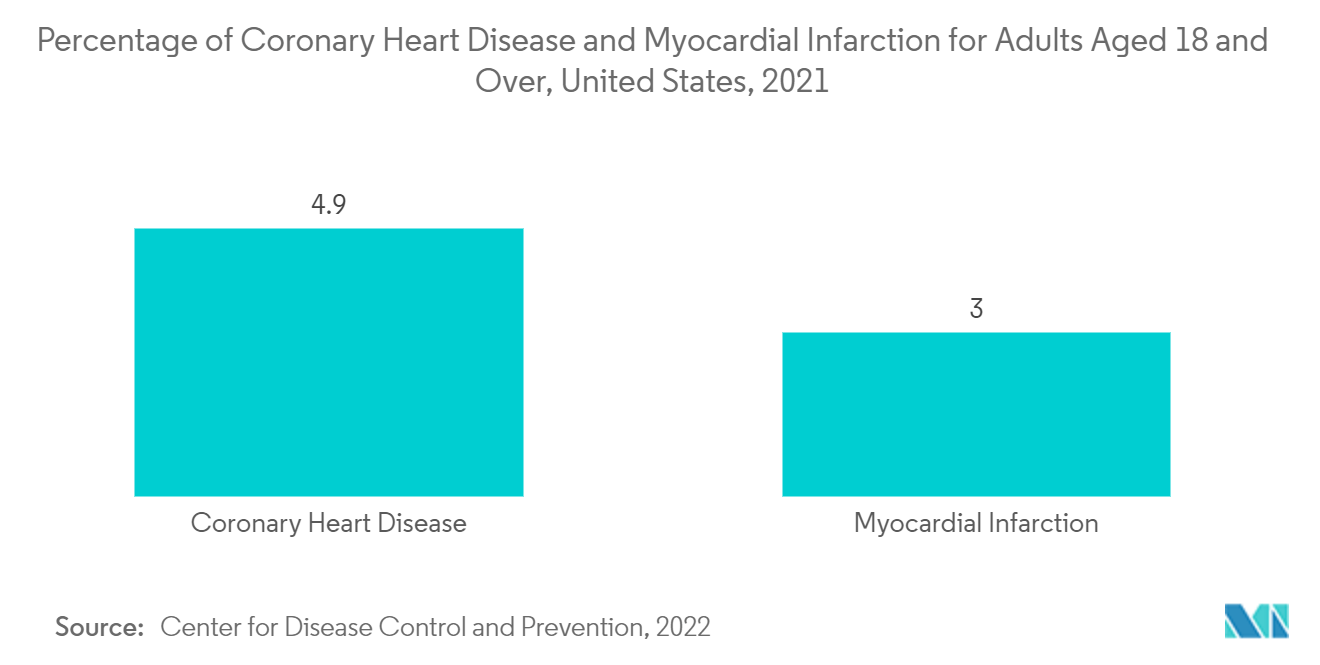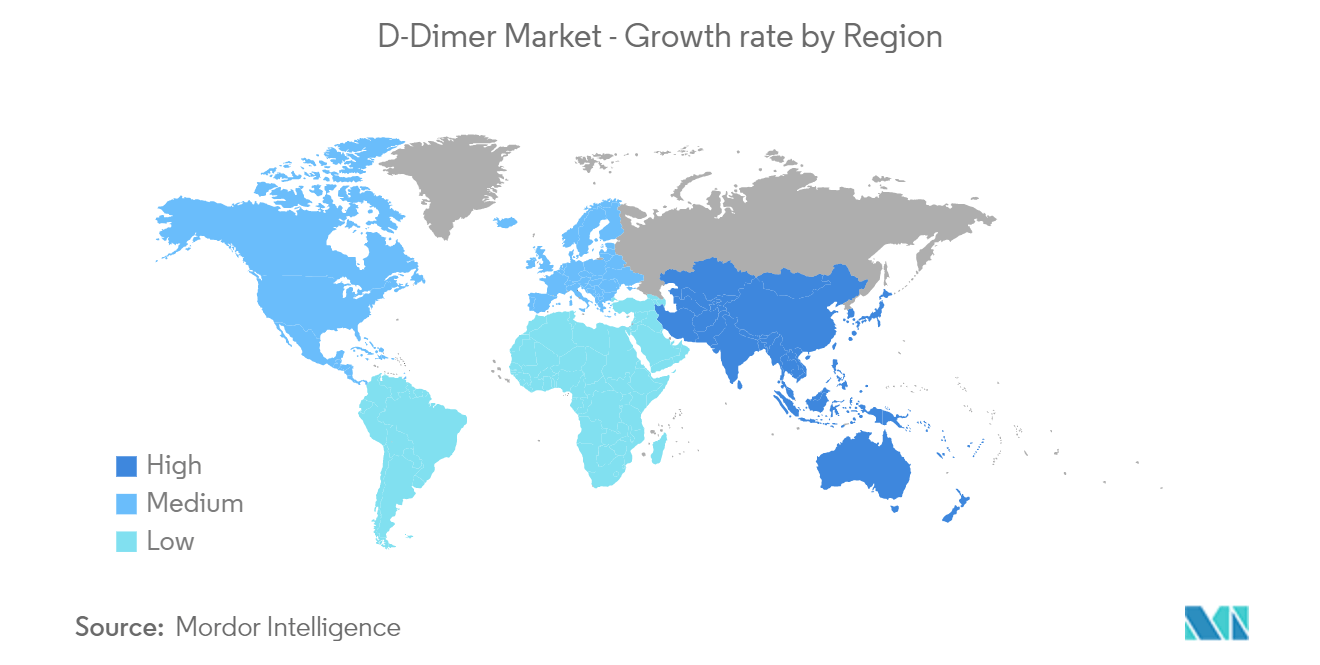Market Trends of D-Dimer Industry
This section covers the major market trends shaping the D-Dimer Market according to our research experts:
The Pulmonary Embolism Segment is Expected to Witness a Robust Growth Over the Forecast Period
Pulmonary embolism is a blood coagulation that blocks and stops blood flow to an artery in the lung. The blood clot typically originates in a deep leg vein and goes to the lung.
Growth of the pulmonary embolism segment is attributed to the growing global prevalence of this disease due to a rise in blood plasma D-Dimer levels among women and the rising geriatric population coupled with a higher burden of associated diseases.
The high prevalence of pulmonary embolism in developed countries is expected to drive segment growth during the forecast period. According to the CDC update in June 2022, pulmonary embolism affects up to 900,000 people annually in the United States. Such a huge incidence of pulmonary embolism (PE) is anticipated to drive market growth due to the rising adoption of D-Dimer testing for PE management.
According to another article published in JAMA Network in January 2021, among patients with chronic obstructive pulmonary disease admitted to the hospital with an acute worsening of respiratory symptoms, pulmonary embolism was detected in 5.9% of patients using a predefined diagnostic algorithm. Thus, the high prevalence of pulmonary embolism will fuel the market during the forecast years.
In addition, according to the study published in BMC Pulmonary Medicine in May 2021, in patients with Tuberculous pleural effusion (TPE), D-Dimer is an objective biomarker for predicting PE. Due to its outstanding sensitivity and specificity for PE, a D-Dimer may eliminate pointless radiological examinations. Such advantages of D-Dimer in predicting PE will therefore lead to increased adoption to reduce the harmful radiological examination, propelling the segment growth.
Therefore, the factors such as the versatile advantages of D-Dimer testing in pulmonary embolism and the high prevalence of PE are expected to drive the segment growth.

North America Holds a Significant Share in the Market and Expected to do Same in the Forecast Period
North America is expected to hold a significant share of the D-Dimer market throughout the forecast period. This is due to the rising prevalence of cardiopulmonary disorders and blood disorders such as venous thromboembolism, strokes, and disseminated intravascular coagulation among the huge population of elder individuals, generating higher demand for the D-Dimer test market.
Furthermore, the market in this region is driven due to the factors such as the developed healthcare infrastructure in the United States, the strong foothold of key market players in the region, and rising healthcare expenditure, among others.
As per the CDC update in December 2022, the percentage of coronary heart disease and heart attack for adults aged 18 and over in the United States in 2021 was 4.9% and 3%, respectively. Such a huge prevalence of heart diseases in developed countries will lead to a rise in the adoption of D-Dimer testing for the diagnosis of coronary artery embolism, driving the market growth.
Furthermore, the University of Florida said D-Dimer testing is effective in individuals with COVID-19. This screening blood test, which was validated originally for seriously ill patients without COVID-19, is still useful to rule out pulmonary embolisms (PE) in hospitalized COVID-19 patients. Such research helps in the increased adoption of D-Dimer testing in the region, driving the market growth.
Therefore, factors such as the rising prevalence of cardiopulmonary diseases and rising initiatives from the key market players are expected to drive the market growth over the forecast period.


